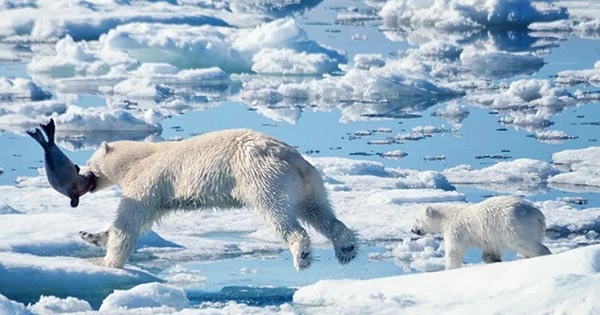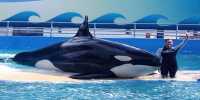According to research published today in the journal Science, a new population of polar bears has been identified in an ice-free area of Southeast Greenland. Polar bears generally use sea ice as a floating platform for capturing seals and other food, but this genetically different species thrives in a place with little to no ice, piqueing the researchers’ attention. The conclusions were established using a mix of genetic data, traditional ecological knowledge from local Indigenous people, and satellite images spanning over 30 years of observations by scientists from the University of Washington in Seattle and the Greenland Institute of Natural Resources.
They calculated that this population in Southeast Greenland contains a “few hundred” polar bears, which is similar in size to the 19 already recognized subpopulations. In the spring, however, the Southeast polar bear population has far fewer adult females with newborn cubs than other groups. They determined that the population was genetically unique from all subpopulations of the species in the wild after collecting samples from a few individuals. Southeast Greenland bears were discovered to be the Arctic’s most genetically isolated polar bears.
Satellite photography confirmed this, demonstrating that bears in Northeast Greenland had little connection with the Southeast population. Overall, research suggests that the Southeast polar bear population is isolated and genetically unique from the rest of the species. The team’s new conduct, though, was arguably the most striking aspect of this study.
Southeast Greenland has no sea ice for more than 250 days each year, well exceeding the ability of polar bears to fast for more than 100 days. This population, on the other hand, does not go hungry. Instead of hunting on sea ice, they exploit new ice from the marine terminal glacial fronts, also known as glacial mélange, as a year-round platform. This isn’t anything that’s ever been seen before. The circumstances in Southeast Greenland where this new population can be found are similar to those predicted for the higher Arctic in the late twenty-first century after much of the ice has been lost due to climate change.
The researchers expect that the Southeast Greenland population’s adaptation to living in a mostly ice-free environment will be a favorable indicator of how the polar bear population will cope with the climate catastrophe. Polar bears may become extinct by the end of the century, according to research released in 2020, because of dwindling sea ice disturbing their foraging patterns.
Depending on how the changing environment impacts their nutrition and behavior, certain populations will suffer more intensely. With its never-before-seen hunting method, it’s anticipated that this new Southeast population may be able to survive the storm a bit better than others — but there are no guarantees.















